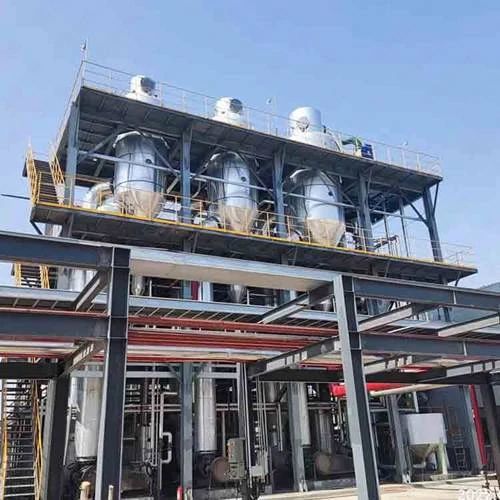How to extract lithium carbonate and lithium hydroxide from lithium ore?
Aug,06,24
Today, let's talk about the process and method of extracting lithium carbonate from lithium ore.

The process and method of extracting lithium carbonate from lithium ore refers to the process of extracting lithium resources from lithium minerals such as spodumene and lithium mica.
Spodumene is mixed with sulfate and sintered at a certain temperature.
After a series of physical and chemical reactions, the metal elements in the sulfate added replace lithium in the ore to produce soluble sulfate.
This is a relatively complex production process.
Process and Method for Extracting Lithium Carbonate from Lithium Ore
The production process of lithium carbonate involves the transformation roasting,
acid roasting, leaching, purification treatment, concentration treatment, lithium precipitation treatment, cleaning, drying treatment,
crushing, and packaging processing of lithium concentrate.
It has the characteristics of stable product quality, simple production process, full utilization of resources, and low cost.
Suitable for the production and application of lithium-ion battery raw materials.
The basic principle of the production process of lithium carbonate is that sulfuric acid and spodumene undergo displacement reaction at 250-300 ℃ to generate lithium sulfate.
This reaction can only occur in lithium pyroxene with a relatively loose structure.
The lithium pyroxene concentrate obtained from beneficiation is first roasted at high temperature in a rotary kiln, cooled, mixed with sufficient sulfuric acid,
and sent to a 250 ℃ acidification rotary furnace for sulfuric acid roasting.
After cooling, immerse in water and add limestone to control the pH value to obtain a crude lithium solution containing about 10%.
Adjust the pH to 11 with lime and add sodium carbonate to remove impurities such as calcium, magnesium, iron, and aluminum.
Evaporate the clear liquid into a purification solution containing about 20% lithium sulfate, and add sodium carbonate to precipitate into lithium carbonate.
Centrifugal dehydration yields lithium carbonate products with a recovery rate of around 90%.
Production process of lithium carbonate
The production process of lithium carbonate has a high yield. Lithium pyroxene is mixed with sulfate and sintered at a certain temperature.
After a series of physical and chemical reactions, the metal elements in the sulfate added replace lithium in the ore to form soluble sulfate,
while the main impurities form insoluble compounds in water.
Then, the sintered clinker is leached and separated, and lithium ions enter the solution.
After purification, concentration, and precipitation, lithium carbonate products are obtained.
The process and method for extracting lithium carbonate from lithium ore generally consists of lithium ore beneficiation,
lithium concentrate conversion roasting, lithium concentrate sulfation roasting, lithium concentrate clinker leaching and washing,
leaching purification, purification liquid evaporation and concentration, lithium precipitation, and sodium sulfate precipitation.
The process technology for extracting lithium carbonate from lithium ore is relatively mature.
The main raw material of this process is spodumene concentrate, which has a relatively stable chemical composition.
The process is easy to control and can easily prepare high-purity lithium products.
The disadvantage is that the cost of preparing industrial grade lithium carbonate from lithium ore is higher than the cost of extracting lithium from salt lakes.
The sulfuric acid method has a high recovery rate for producing lithium carbonate and can process ores with lithium oxide content of only 1.0-1.5%.
However, a considerable amount of sulfuric acid and soda ash are converted into low value sodium sulfate,
and the dosage of sulfuric acid should be minimized as much as possible.
The advantage of this method is that the solution obtained by leaching and roasting contains 100-150g/L lithium sulfate,
which can be purified to obtain a relatively pure solution.
Production process of lithium hydroxide
The process flow and equipment for producing lithium carbonate from lithium concentrate first obtain lithium concentrate (5-6% Li2O) by flotation technology from lithium ore (0.7-1.3% Li2O),
then transform it through calcination and extract lithium through sulfation roasting.
Lithium pyroxene concentrate is roasted at a high temperature of 1000-1200 ℃ to convert its crystal phase into β - type, finely ground and added with excess sulfuric acid,
and then acid roasted in a rotary kiln at 300 ℃ to generate soluble lithium sulfate. After cooling and neutralization, it is filtered to obtain lithium sulfate solution.
Then add sodium hydroxide for causticization to obtain sodium sulfate solution,
freeze to remove sodium sulfate, obtain lithium hydroxide solution, evaporate and centrifuge to obtain lithium hydroxide,
and then introduce carbon dioxide into the lithium hydroxide solution to obtain lithium carbonate.
This method has the advantages of low energy consumption, small material circulation, and high production efficiency.






